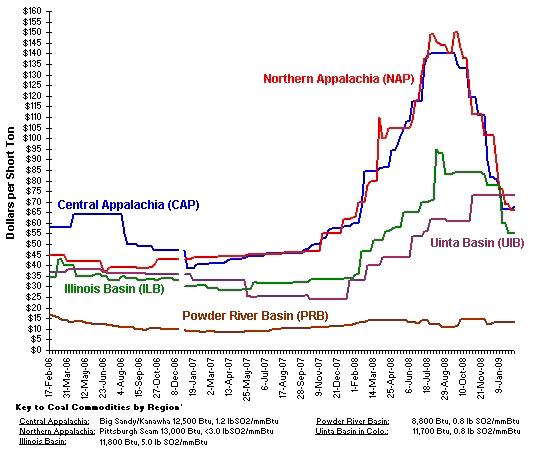Why might nuclear be necessary?
 In today’s Independent newspaper (London, Monday 23 February) I argue that we may need to accept some new nuclear power stations. I put forward the view that the trench warfare between the pro-nuclear groups and those that support renewables means that progress towards ‘decarbonising’ electricity generation in the UK is too slow. We probably need to invest in many different types of non fossil-fuel generation as rapidly as we can if we are to meet the tough targets for UK emissions reduction so painfully won by groups such as Friends of the Earth. We no longer have the luxury of ruling out nuclear expansion.
In today’s Independent newspaper (London, Monday 23 February) I argue that we may need to accept some new nuclear power stations. I put forward the view that the trench warfare between the pro-nuclear groups and those that support renewables means that progress towards ‘decarbonising’ electricity generation in the UK is too slow. We probably need to invest in many different types of non fossil-fuel generation as rapidly as we can if we are to meet the tough targets for UK emissions reduction so painfully won by groups such as Friends of the Earth. We no longer have the luxury of ruling out nuclear expansion.
***
In this note, I want briefly to expand on this opinion. There are two parts to my argument – the medium term and the long term.
First, the medium term. It’s well known that a large fraction of the UK electricity generation capacity is scheduled to close between now and 2015. The Large Combustion Plant Directive (LCPD) obliges the coal-fired power stations that have not installed flue gas desulphurisation (FGD) equipment to close once they have worked for an additional 20,000 hours. (There are 8,760 hours in a year). In addition, the first and second generation nuclear plants are reaching the end of their working lives.
Over the last couple of years electricity demand has begun to fall slowly. December 2008 saw electricity transmission on the National Grid down almost 4% from the previous year. Some of this fall will be related to declining levels of economic activity and some to the historically high prices being charged. We cannot be completely certain but it also appears likely that some of the reduction is due to successful energy efficiency measures.
Nevertheless, even with stable or gradually falling demand, the UK needs more electricity generating capacity as the old plants are retired. The country needs new power stations both to meet existing needs and because we are likely to see the beginnings of large-scale use of electric cars within a decade. We may need eventually to add about 15% to our electricity production to cope with the needs of car batteries. In the past the government has said that we need 25 gigawatts of new capacity within twenty years, and I think that this number is still broadly correct. (25 GW is approximately a third of all current UK generating capacity.)
Where is this new capacity going to come from? Without nuclear, we are going to struggle to avoid relying on new fossil fuel plants. By 2020-25, we will probably have viable carbon capture technology so that new power stations then will not be major carbon emitters. This is ten to fifteen years away. The current problem is a slightly different one. At today’s fuel and carbon prices, the most profitable way to generate electricity in the UK is to burn coal (almost pure carbon) rather than natural gas (which is mostly hydrogen).
A year ago almost to the day, I walked round Didcot A Power Station, one of the largest and most polluting of the UK’s coal power stations. It had barely worked all winter. The price of coal was high, and emissions allowances were trading at above €25 a tonne. RWE, its owner, could make no money from producing electricity from coal. Gas-fired stations were operating instead. The world price of coal then collapsed and now stands at little more than a third of its peak price.
The chart below shows a sample of recent US prices (www.eia.doe.gov), where the price decline is slightly less apparent because much of the coal produced in the US isn’t open to the impact of rapidly declining international prices. Coal for UK power stations is, with most of the tonnage bought from Colombia, South Africa, and Australia.
Similarly, the price of European emissions permits has sunk precipitously, although there has been a slight rise in recent days back to around €9. Taken together, these two forces mean that power station operators are making a fortune from burning coal. But why does this matter if much of the capacity has to close anyway in the next few years as result of the LCPD?
The problem is that the generating stations don’t actually need to close. The press always reports this incorrectly. The LCPD obliges plants without FGD to close. But even as I write this, the analysts at the UK’s big six energy suppliers will be carefully calculating the cost of installing FGD on plants like Didcot. It’s very costly, but small compared to the profits they are now making from coal. In the next few months expect several of the UK coal-fired stations without FGD to announce that they will install this equipment before the 2015 deadline, instead of closing as expected. There’s still plenty of time.
The current economic slowdown has given us this gloomy combination – cheap coal, inexpensive CO2 permits, and relatively low wholesale electricity prices. The implications for the UK’s CO2 emissions are awful. If Didcot and other plants stay open, we are setting back the decarbonisation of electricity by a decade. Offshore wind, everybody’s favourite candidate for low-carbon generation, cannot possibly compete with coal-fired generation at today’s electricity and CO2 permit prices. Wind is subsided by the ROC system but even with these subsidies, the realised price is not enough to persuade banks to lend to the giant £1bn+ projects off the Kent coast and elsewhere.
So, to summarise, in the medium term, we need nuclear as fast as possible because otherwise we get more coal. Nobody concerned about climate change can regard the 8 GW of coal plants without FGD staying open with anything other than horror. I haven’t done the calculation carefully, but the effect of this might be to add 10% to UK emissions, compared to zero or low-carbon alternative ways of generating electricity.
But what about the cost of nuclear power? This blog has had several articles in the last year that look at the price of the new Finnish reactor, now several years and several million euros over budget (see here and here). I can see no reason to believe that nuclear construction in the UK will not be dogged by similar problems as in Finland. The next generation of nuclear power stations (principally the Areva EPR) are likely to cost over £4bn and possibly as much as £5bn for 1600 MW plants. Although construction processes may improve and regulatory costs decline, the EPR will probably deliver electricity at over 7p per kilowatt hour, twice what it costs to produce coal-fired electricity today. This means, as some of the big six electricity companies seem to be telling government already, that nuclear will need guaranteed pricing. EDF told me that nuclear power will cost 4.2 to 4.5p per kilowatt hour but the other companies were quietly very much less optimistic. If today’s prices persist EDF may possibly build nuclear power stations without financial guarantees; the other potential operators simply will not.
Therefore I am afraid that not only will we need to encourage nuclear power but we will also need to give the operators guaranteed prices for their nuclear output, and at levels well above today’s standard wholesale prices. By the way, we’ve got into this mess simply because we didn’t invest heavily enough in onshore wind, tidal or wave power in the last two decades. The various virulently anti-wind bodies, such as the Council for the Protection of Rural England, should be ashamed of themselves. But it’s too late to do anything about it now.
Second, the longer-term need for nuclear. David MacKay’s book Sustainable Energy – Without the Hot Air has many telling illustrations. One of them is an Ordnance Survey map on which Sizewell nuclear power station is shown. Sizewell generates 3% of the UK’s electricity in an area of a few hundred hectares. To generate as much power with wind would require about 2,500 very large turbines. (All the wind turbines currently working in the UK deliver less electricity than Sizewell.) 2,500 turbines will use about 40,000 hectares of good hilltop land or about 0.2% of the UK. Personally, I would rather have the turbines than Sizewell, but I’m aware this opinion is not shared by the majority of the UK population.
Professor MacKay uses this comparison to point out how much land area is used by renewables and how many turbines and other devices we need to replicate the output of one large power station. The implication of his clear and rigorous analysis is that we will struggle to cover our energy needs (not just electricity of course) from renewables. To get to the Climate Change Committee’s target of no more than 20% of today’s emissions by 2050, we may need to accept nuclear. (In my book Ten Technologies to Save the Planet I try to show how it is possible to cope without nuclear, but I readily accept that the target is tough to achieve.)
Mark Lynas makes an analogous and wider point. He says that renewable technologies will generally have a much greater impact on ecosystems than nuclear energy. What is better, he says: vast biomass plantations with minimal biodiversity or a single nuclear plant? Hundreds of thousands of wind turbines or twenty nukes? In his view, the increasing pressures on the world’s ecology from human activities make it difficult to conclude that nuclear is the wrong answer. He’s not just talking about climate change, but the other main global boundaries of limited water supply, species loss, the abuse of the phosphorus cycle, and other problems.
I’m not quite sure I entirely agree with Mark Lynas, but I do think that the public debate needs to move beyond the ritualised and stale statements of both the pro- and anti-nuclear groups. Nuclear is costly, the new EPR technology is untried, and waste disposal and the proliferation of weapons grade fissile material remain serious issues. But we are making so little progress with other technologies that I reluctantly conclude that we also need to sponsor nuclear power in the UK.
[ad#ten-technologies-mackay]
